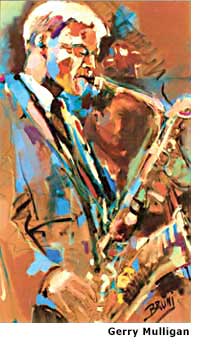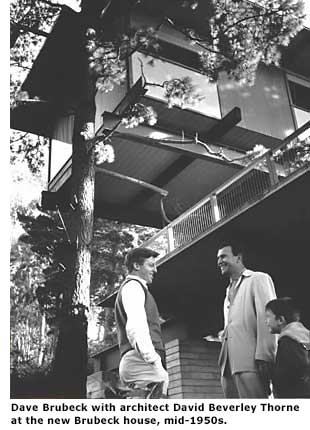Mid-Century Jazz: Listen to the Cool - Page 2
So it makes sense that when music writer Robert Gordon prepared notes for an anthology of California-based jazz for Contemporary Records in 1998, he was forced to admit "there is no general agreement upon the definition of the term 'West Coast Jazz.'" Later simply referring to it as "that music produced by jazz musicians residing at the time on the West Coast," Gordon assisted in the production of the impressive anthology, four compact discs packaged as the West Coast Jazz Box, showcasing the genre, and in particular artists recorded between 1950 and 1964 on the Contemporary, Prestige, Pacific Jazz, Nocturne, and a few other mostly California-based jazz labels.
Of the several live venues represented on the 'West Coast Jazz Box,' Gordon pinpointed the Lighthouse, in its evocative sand-and-salt-spray setting in the Los Angeles suburb of Hermosa Beach, as the launching pad for "a West Coast school." In the early 1950s, bassist Howard Rumsey was engaged by the Lighthouse's owners to host what participating horn player John Graas recalls, in the anthology's notes, as "modern jazz nights."

Graas and several colleagues from Stan Kenton's 1951 'Innovations in Modern Music' big band tour had decided, understandably, to not continue with the tour but to try their luck in a new and benign climate. The horn players among them manifested what critic Crouch detected as the airy influence of Lester Young, in early recordings under the moniker of the Lighthouse All-Stars. The equally influential Miles Davis is featured on one track of the 'West Coast Jazz Box' set, in a 1953 performance at the Lighthouse of Dizzy Gillespie's 'A Night in Tunisia.'
'Cool' took on a lower, sensual sound in the baritone saxophone of Gerry Mulligan, recorded in 1952 and later. Mulligan was sometimes handsomely partnered with trumpeter (and sometime singer) Chet Baker. The pair occasionally journeyed north from Los Angeles to play engagements in musically fertile San Francisco, at the legendary Black Hawk club.
A local regular at the Black Hawk, sometimes performing at the piano six nights a week, was Dave Brubeck. "Dave's arrival into the San Francisco scene was really the key event in terms of setting up a whole school of modern jazz," says Ted Gioia, author of 'West Coast Jazz: Modern Jazz in California, 1945-1960.'
Whatever 'school' might lay claim to Brubeck would also have to acknowledge his resistance to being pigeonholed. "[He] doesn't really fit in the light version of West Coast Jazz," Crouch maintains. "You had the cool, fluid kind of playing that you got with Paul Desmond," the saxophonist in Brubeck's classic quartet and the composer of 'Take Five,' their biggest hit. "And then you had a much more aggressive kind of powerhouse approach from Brubeck."

Brubeck rose unique among jazz stars by appearing on the front cover of Time magazine, in November 1954. Shortly afterwards, Brubeck, along with wife Iola ('Oli') and their growing family, moved into a modernist home in the hills of Oakland, designed by a young David Beverley Thorne, who would later become distinguished by contributing a house design for 'Art & Architecture' magazine's renowned Case Study House program.
Thorne, now 82, recounts how Ted Simpson, a builder friend of his in 1949, encountered Brubeck at a club, near the site of Thorne's future Oakland practice, where Brubeck was engaged in a trio setting with then-drummer Cal Tjader and bassist Ron Crotty.
"Dave mentioned [to Ted] that he and Oli owned a crazy little steep lot in the hills of Montclair [above Oakland], and did he know anyone that could possibly design a house for them on it," Thorne recalls. "I guess Mr. Simpson told Dave that 'yes, he knew a crazy student at Cal [University of California at Berkeley] that could do the job.'"
The Brubecks had no intention of making modernist history with the design, Thorne says, but rather just putting an affordable home on a spectacular piece of land, which Brubeck had acquired as a gift from his father after his discharge from the service.

"Being that the lot was almost impossible for the average architect, it was still vacant," Brubeck recollected during a recent working return visit to the Bay Area with his wife. "And [Thorne] said, 'This is going to be perfect for cantilever.' He could see that on the peak, at the back end of the lot, was a huge boulder. And as he started visualizing it, his plans were to have the whole lot suspended from the boulder, in an 'L,' with I-beams coming out which faced the Bay [in one direction] and the canyons [in another]."




